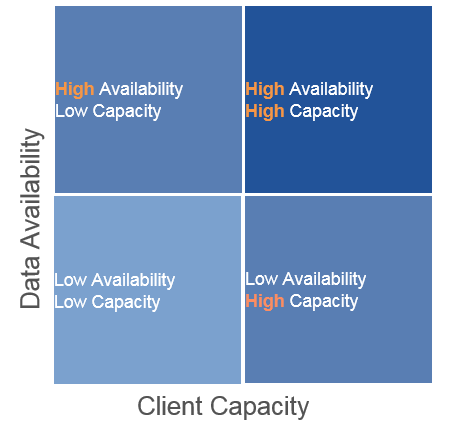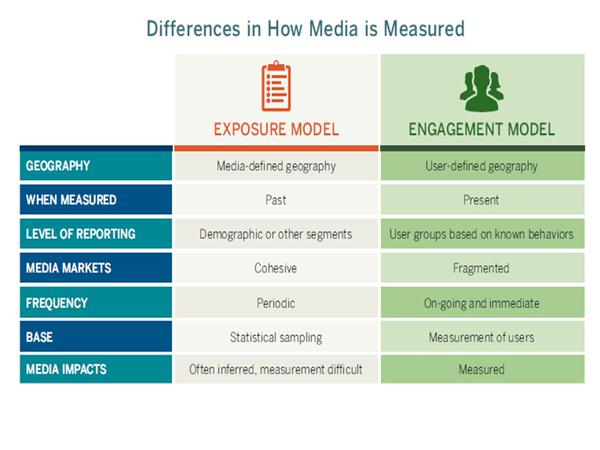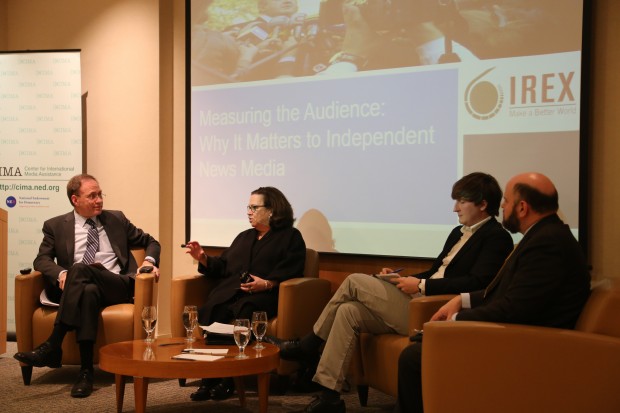A Wrap-Up of CIMA’s Discussion
As the coordinator of CIMA’s events, I spend a lot of time on a lot of different topics—from hammering out the concept of the event to finding panelists to wrapping my mind around topics that I am sometimes, frankly, not the most familiar with. This event was no different. When CIMA decided to have an event to launch Michelle Foster’s report, Measuring the Audience: Why It Matters to Independent News Media, I went through the typical event steps, starting with reading the paper (twice!). My initial thought was: wow, this is a wonky issue.
Despite this complex topic, the panelists at Wednesday’s event really broke down the concept of audience research and showed the audience why the media development community should focus on this. My colleague, Rosemary D’Amour, recently blogged about audience research, stating that “a failure to understand [a newsroom’s] audience will certainly lead to a news organizations failure.” This makes sense—without knowing who you are reaching and how you are reaching them, you will have a hard time building a sustainable business model—but why should the media development community care?
Here are a few major takeaways from the event:
First, without better audience measurement practices, media in developing countries will never reach their full potential. They may never even become remotely financially stable. Since there are so many levels to measuring an audience, there is a lot more that needs to be done than simply “doing” audience research. Many media organizations around the world simply do not have the time or resources to do it. CIMA’s senior director Mark Nelson discussed the idea of a “data free” zone, where media outlets do not have any data on their audiences. The consequence of this is that it becomes extremely difficult for newspapers to become financially sustainable by monetizing their audience.

This chart shows how MDIF would typically think about the media environments in potential investment countries.
It’s not necessarily that news outlets don’t want to conduct this research—many have issues with availability and capacity. The Media Development Investment Fund’s Evan Tachovsky elaborated on this point, “When I’m talking about availability, I’m talking about first, that the data exists…second, that it’s not cost prohibitive. When I’m talking about capacity, I’m talking about whether they have staff that deal with audience data as part of their set duties and whether their management actually takes data seriously.”
The second takeaway from the event is the rapid-speed changes in technology. Simply put, this is changing the way things work in every aspect of our lives, and the world of audience research is no different. Michelle Foster, the author of CIMA’s corresponding report Measuring the Audience, highlighted this concept in a discussion about the exposure model vs the engagement model of measuring impact.
 Traditionally, media outlets were evaluated by advertisers “based on the number of people who could potentially be exposed to their message,” said Foster. However, these messages are “expensive, require professional coordination, favor large media over small, and urban media over rural. They are fundamentally a look backward in time.” Today, we see more people measuring engagement in real time at little cost, no matter where their audiences are, largely due to the nature of the platforms on which news is accessed. While we haven’t reached a place where this is exclusively the type of measurement that occurs, it is clear that we are heading in that direction, and even if engagement never fully takes over the traditional methods of measuring the audience, it is clear that the dynamic is shifting.
Traditionally, media outlets were evaluated by advertisers “based on the number of people who could potentially be exposed to their message,” said Foster. However, these messages are “expensive, require professional coordination, favor large media over small, and urban media over rural. They are fundamentally a look backward in time.” Today, we see more people measuring engagement in real time at little cost, no matter where their audiences are, largely due to the nature of the platforms on which news is accessed. While we haven’t reached a place where this is exclusively the type of measurement that occurs, it is clear that we are heading in that direction, and even if engagement never fully takes over the traditional methods of measuring the audience, it is clear that the dynamic is shifting.
Finally, the overarching theme of this event was that no two countries are the same when it comes to the issues with audience measurement. IREX’s Leon Morse’s discussion of the Media Sustainability Index is proof of this idea. Each country’s legal and political systems have major impact on the environment for business models to thrive. In these types of environments, audience research will not hold up. Additionally, no two markets are the same, so donors need to evaluate each environment for a better assessment of what types of places will succeed.
This event highlighted just some of the many needs that news organizations around the world have when it comes to audience research. CIMA hopes that this will be just the beginning of the conversation. To watch the full event, click here or watch below.


Comments (0)